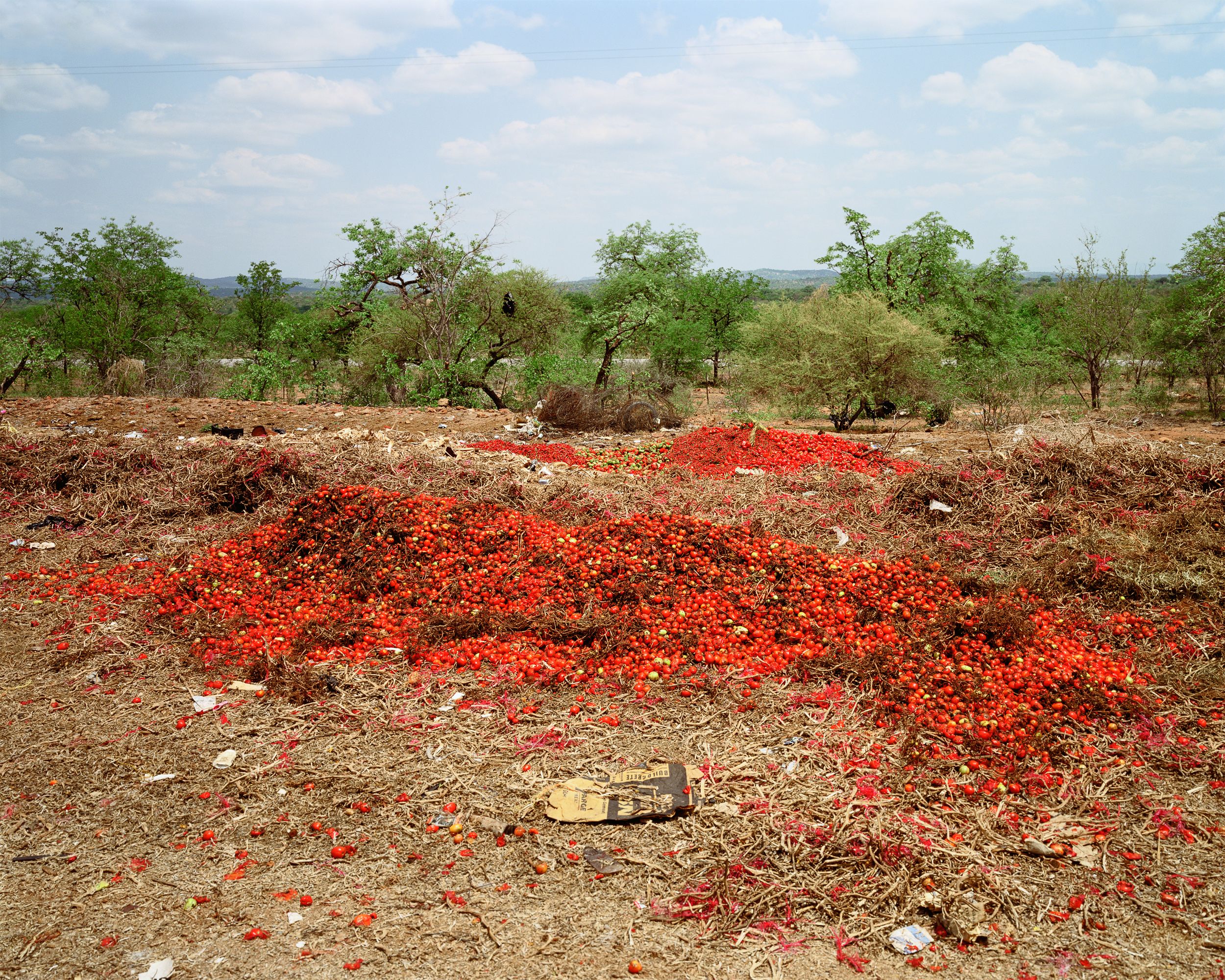 Discarded tomatoes and chillies in the veld
Discarded tomatoes and chillies in the veld


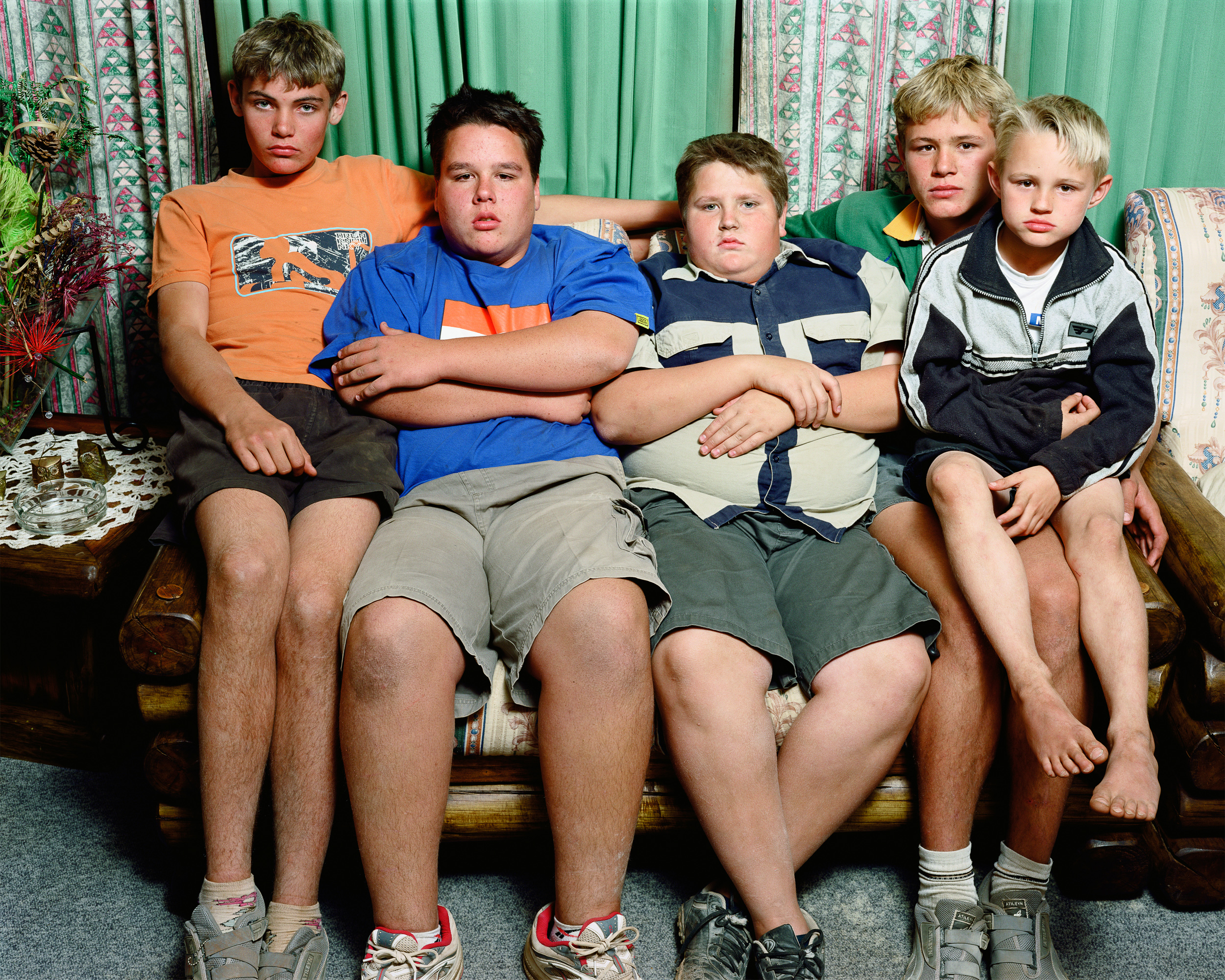
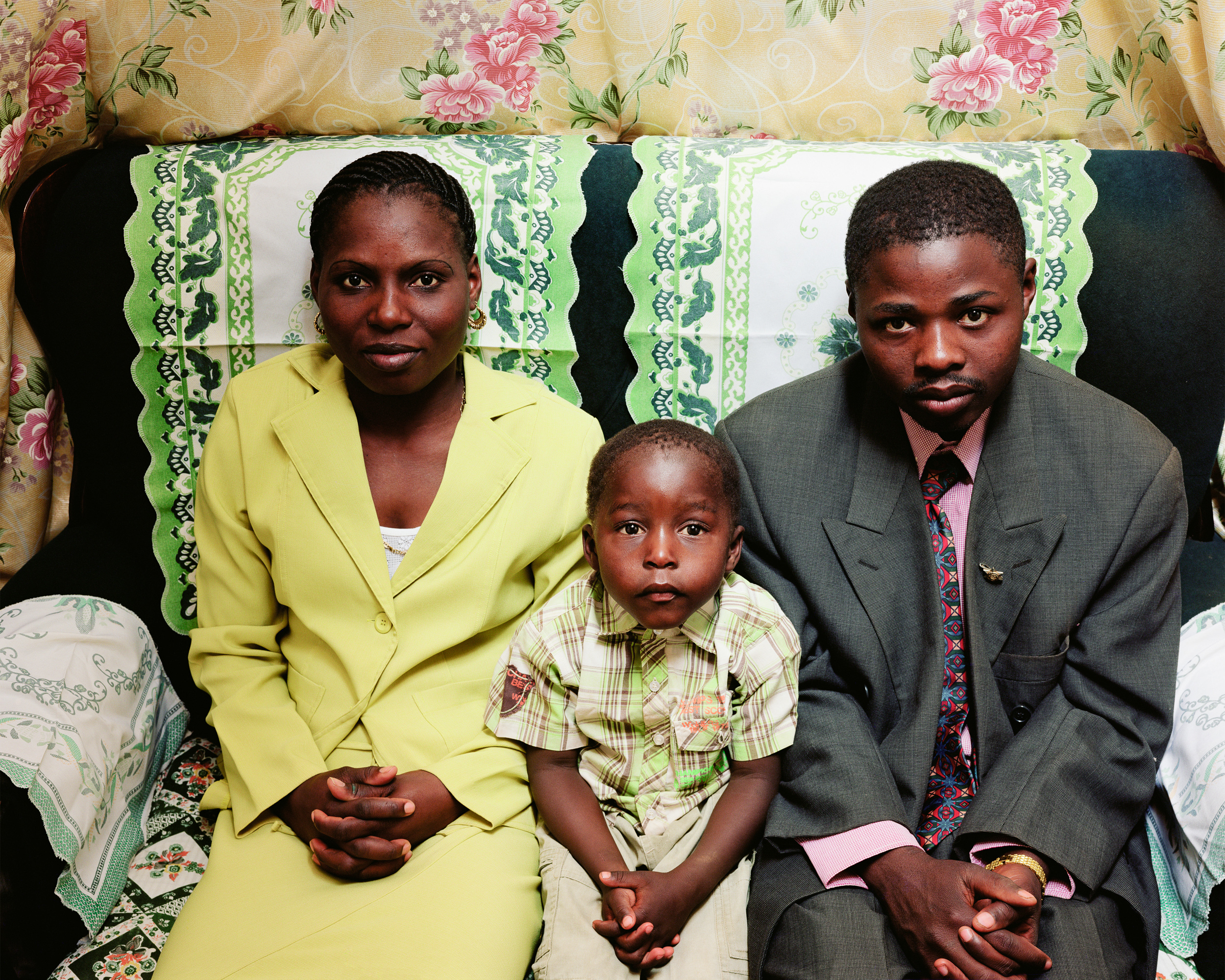
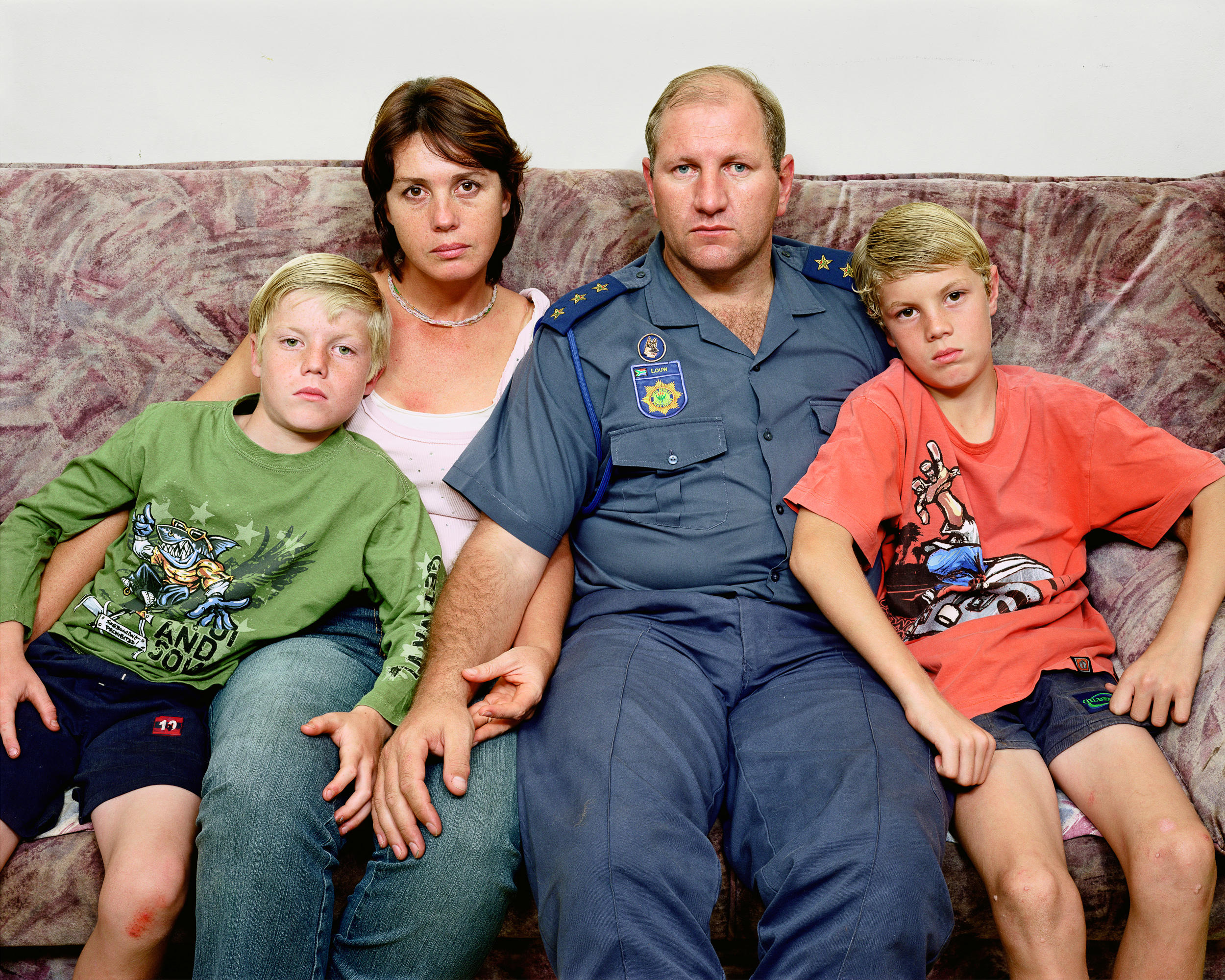
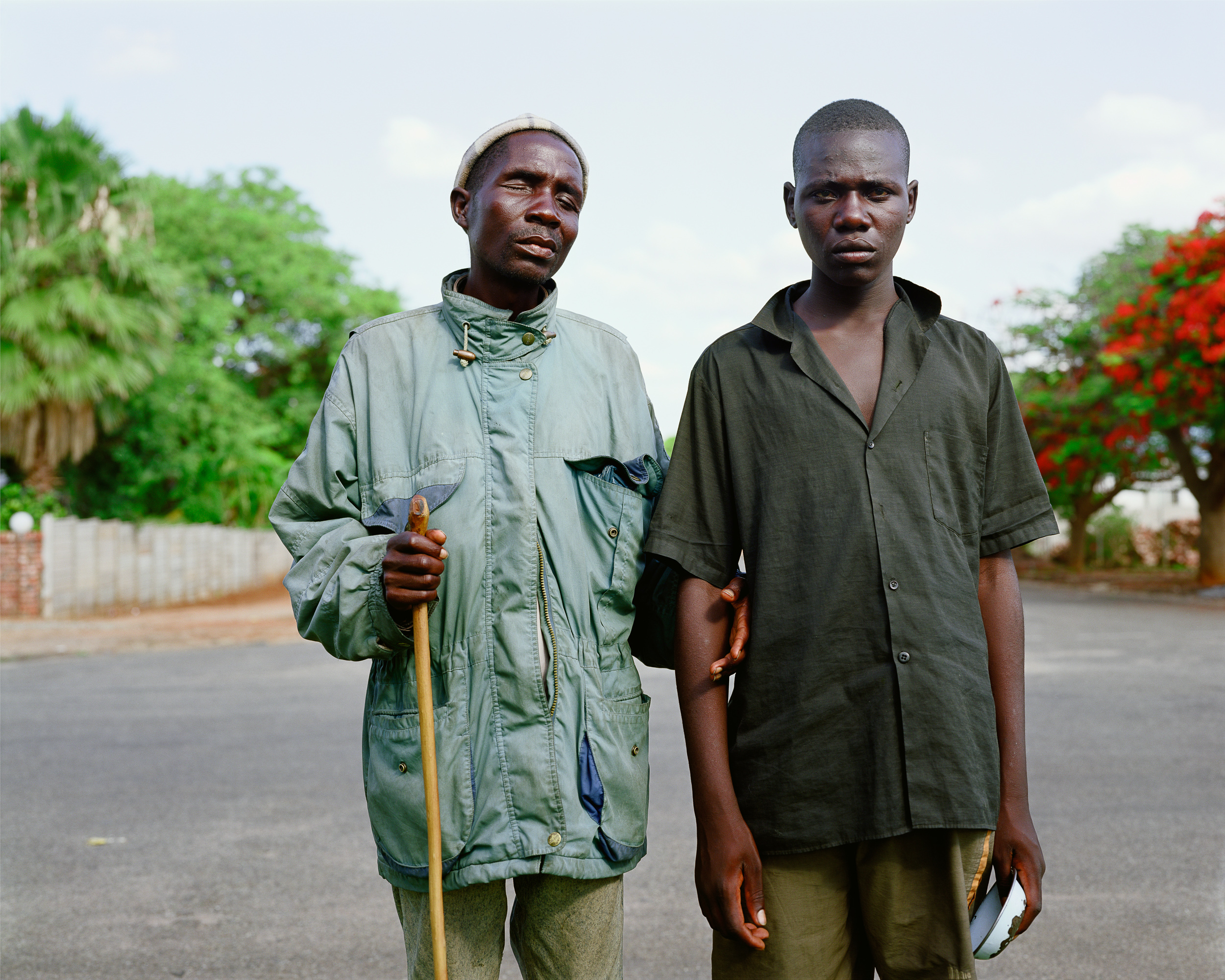
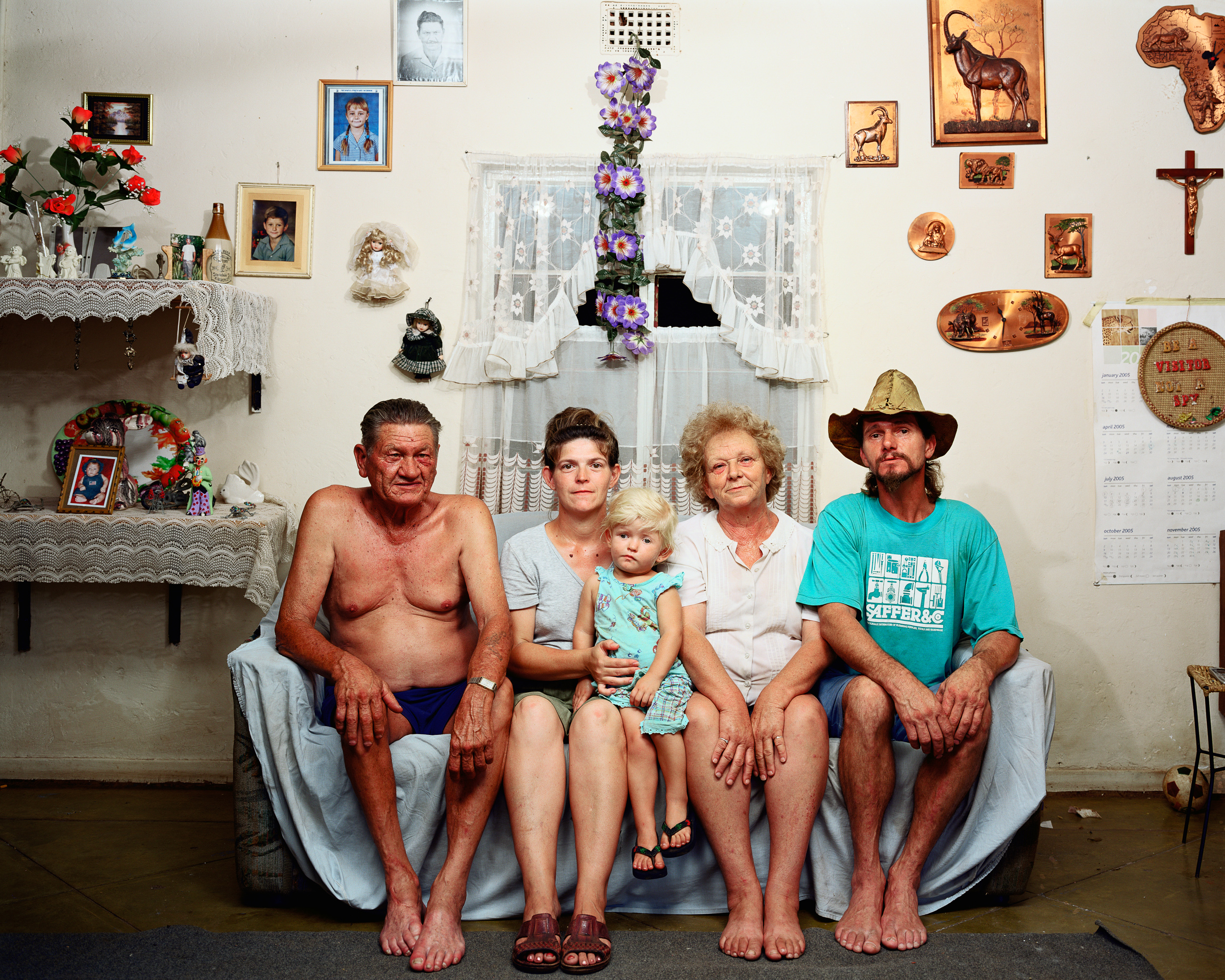
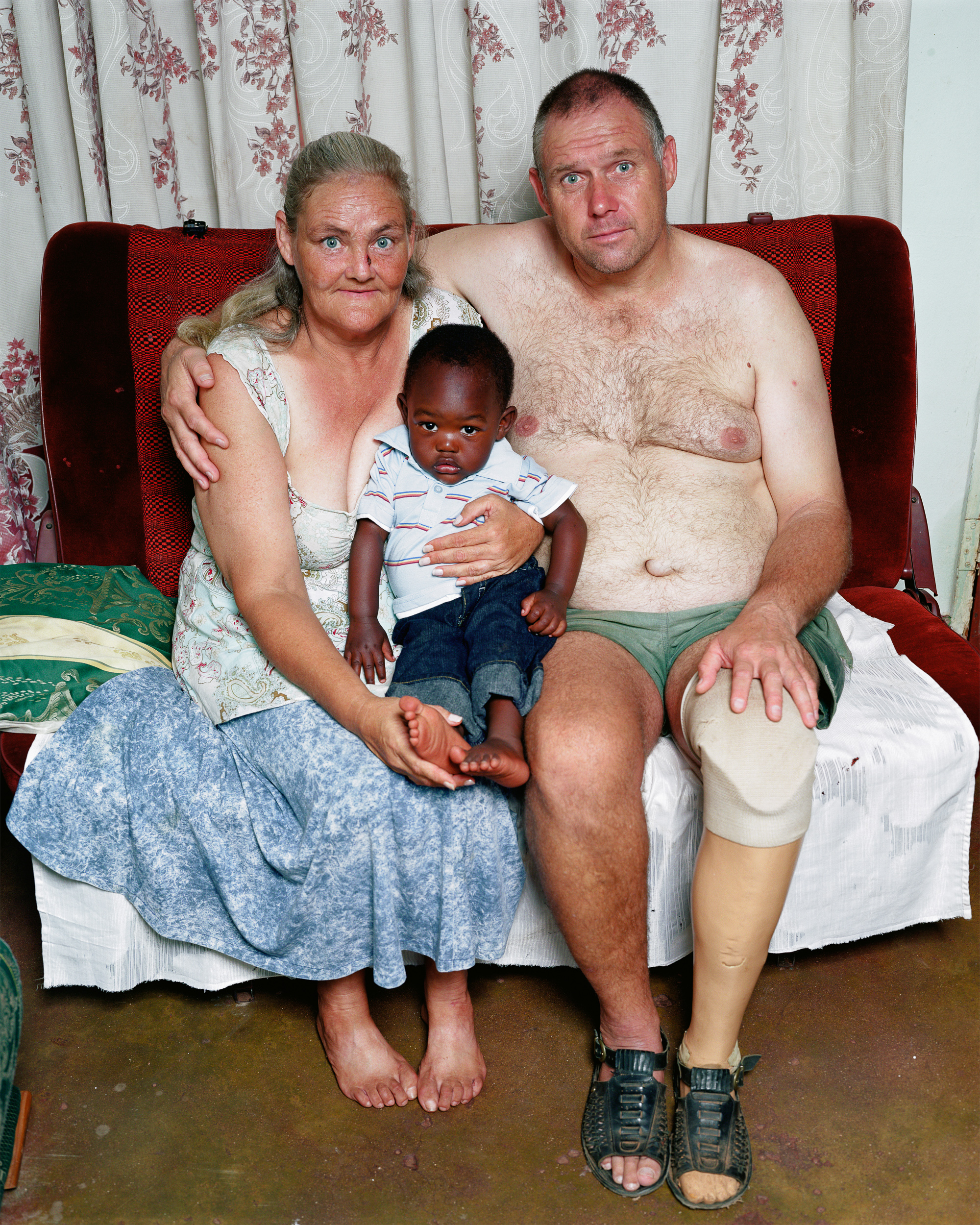
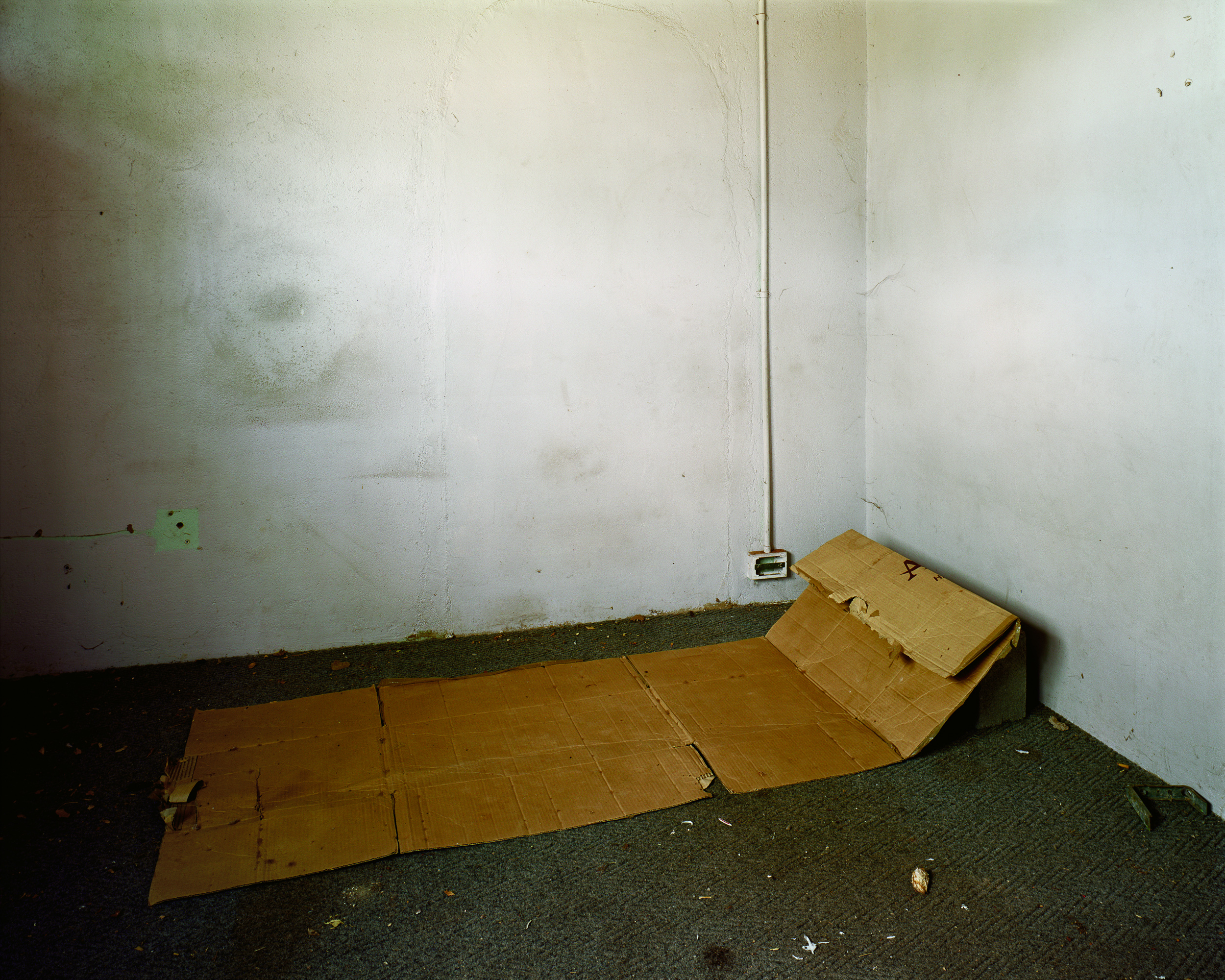
MESSINA/MUSINA (2007)
Pieter Hugo in conversation with Joanna Lehan (21 February 2007)
Musina is the northernmost town in South Africa. Its name has been changed, and this fact is highlighted in the overarching title of your project, Messina/Musina. What is its significance?
Musina is situated just south of the Limpopo River, which forms the border between South Africa and Zimbabwe. The area is rich in minerals, and apparently the name originated with the Musina people, who discovered copper deposits and settled there. In 1904 Messina was founded as a copper-mining town, its name a colonial corruption of Musina. The name was changed in 2002 as part of a national process of reclaiming the country's indigenous heritage. It's really a symbol of the changing of the guard, but to me also indicates a community that's in transition. Driving on the highways, you still see the old name on signage, but when you get into the town the new spelling is there on the walls.
What first brought you to Musina?
So after the AIDS story, you decided to stay on?
What kind of people did you find there? What are the issues you wanted to explore?
How do these moral ambiguities translate in your photographic approach? How did you plan to capture them photographically?
Speaking more generally for a moment, how did you come to use medium- and large- format cameras, and formal portraiture, which are more common to commercial photography, given that photojournalism was the most active mode of photography in South Africa when you were growing up?
The large-format camera demands a much more interactive engagement. What is it about this different picture-making process, the dynamic it entails, that works for you?
So you're simply offering them a witness, a voice?
A critic might say, then, why aren't your pictures more sympathetic in terms of their gaze? You are revealing, highlighting those aspects that are different. How do you address that?
Getting back to Musina, let's look at some of the landscape images first. What about Rest area on the road to Tshipise, with the painted baobab and the benches?
The picture Discarded tomatoes and chillies in the veld, with its red mounds, is mysterious. Tell me about it.
What about your pictures of people – the family portraits?
Tell me about Martie and Morkel Smith, their son Stephen and his fiancée Illze Venter with their dog Snooze.
These family portraits tread such an interesting line. They are so nearly straight – like the bright, commercial family portraits that people have taken in downmarket department stores in the US – but there is something off about them. What does this aesthetic mean to you?
How would you respond to critics who might say this approach to a family clearly such an ironic approach is mean-spirited?
So, no matter the class or circumstances, you think a family portrait made in that style would be ironic?
But to press the point, there's more going on within these families' dynamics than run-of-the-mill family problems. There is obviously some spectacle you are creating, like in Pieter and Maryna Vermeulen with Timana Phosiwa. They're a white couple, the man has a prosthetic leg, she is holding a small black child, and they look disenfranchised.
One can't deny that using this methodology of an idealised family portrait to depict a disenfranchised family is a provocative gesture.
It's the abandonment of their own culture.
You are certainly not depicting Musina as some sort of social utopia. There is a violence, a hardness, evidence of difficult lives, apparent in so many of the pictures.
What about the details and interiors – such as the photograph of the Uniting Reformed Church?
The precedent to shooting small towns in South Africa is David Goldblatt's In Boksburg. Did you think about his approach, or any others, in photographing this community?
A difficult issue to address is the critique of the gaze of the white male photographer in Africa. You know, it's a truism. Many people are going to look at your work in the context of your identity. It's intractable. Your gaze is politicised. How do you feel about that?
But your look is very direct, and that is a new thing. I think that in the past, people might have avoided this approach, felt that such a direct gaze is confrontational. And it is confrontational, in terms of confronting the viewer, and dealing with your subjects face to face, engaging with them, collaborating with them. I think that is new in terms of depicting social issues in South Africa. Of course, you have the right, and everyone has the right, to have a voice. You know, some people still look at the world in terms of black and white, and you are a white guy looking so directly at people – what does that mean? Even the consciousness that you have the right … Before your generation people didn't feel they had the right.
Well then, what aspect of your work do you think makes people uncomfortable – if indeed you think it does?
Joanna Lehan is a freelance writer and photo editor based in New York. She was coorganiser of the International Center of Photography’s Triennial of Photography and Video in 2003 and 2006.
Founded by white settlers as a copper-mining town in 1904, Musina is located near the Limpopo River on the border of Zimbabwe. The town was originally known as Messina, a colonial misspelling of the name of the Musina people who settled in the region centuries ago following their discovery of copper deposits. In 2002, the town’s name was changed to Musina, part of an ongoing and sometimes acrimonious process of name changes taking place across South Africa. I find this process of redress interesting: if you see history rewritten twice, as has happened in Musina, you become distrustful of the competing narratives, both the old and the new.
I first visited Musina with a journalist who was writing about people fleeing the dire situation in Zimbabwe and entering South Africa illegally. He knew of gangs who were smuggling people across the Limpopo River. But he forgot his passport, so we ended up staying in Musina. It allowed me to do some basic investigative research. Musina is a market town on a national highway that connects South Africa to Zimbabwe, and beyond that Zambia. It is home to a large military base and nearby diamond mine, and there is also a robust hunting industry that occurs on the surrounding game farms. The town, which has prospered off the back of Zimbabwe’s post-2000 economic collapse, is prone to boom and bust cycles. Its shifting population – a mix of truck drivers, miners, soldiers, prostitutes, cigarette smugglers, farm labourers, hunters, social welfare workers, AIDS caregivers, day traders from Zimbabwe, and residents – reflects this.
After returning to Cape Town, Musina stuck in my mind. Perhaps it was its remoteness. I had previously worked in the region, but never as far north as Musina. If you draw a line from Cape Town, where I live, Musina is as far as you can go and still be in South Africa. I think that a lot of my work interrogates the idea of the outsider and the margins. I am not alone in this preoccupation. I am aware that the remote border town is a popular trope in South African arts and letters. It is a place where social issues that persist throughout the country are starkly miniaturised and, possibly, easier to depict.
Shortly after visiting Musina I was given the Standard Bank Young Artist award, which includes a small grant to produce a new body of work. I used the money to return to Musina, where I spent several months photographing in and around the town. It wasn’t always easy to access the various users of this embattled frontier town. Unlike on other projects, I have retained no contacts from my time in Musina. Many of the people I photographed have moved. This, I suppose, is true to the town’s essential character.
My essay comprises family portraits, landscapes and still lifes. This was largely determined by the equipment I was using at the time: a tripod-mounted, large-format camera. Previously, I had worked with a range of cameras in different formats. Working with a large-format camera unavoidably slows things down. You can’t rush or photograph spontaneously. My process, though, was largely intuitive. I developed a vocabulary, a way of seeing if you will, that played an important role in the development of another South African project, Kin, which started around the same time as Messina/Musina.
Pieter Hugo in conversation with Joanna Lehan (21 February 2007)
Musina is the northernmost town in South Africa. Its name has been changed, and this fact is highlighted in the overarching title of your project, Messina/Musina. What is its significance?
Musina is situated just south of the Limpopo River, which forms the border between South Africa and Zimbabwe. The area is rich in minerals, and apparently the name originated with the Musina people, who discovered copper deposits and settled there. In 1904 Messina was founded as a copper-mining town, its name a colonial corruption of Musina. The name was changed in 2002 as part of a national process of reclaiming the country's indigenous heritage. It's really a symbol of the changing of the guard, but to me also indicates a community that's in transition. Driving on the highways, you still see the old name on signage, but when you get into the town the new spelling is there on the walls.
What first brought you to Musina?
I first visited the town with a journalist who was writing about people fleeing the dire situation in Zimbabwe and entering South Africa illegally. He knew of gangs who were smuggling people across the Limpopo River. We were going to Zimbabwe but when we got to the border the journalist realised he'd left his passport behind. At that moment I got a call from Colors magazine looking for material for their AIDS issue. Now, Musina is on a highway that runs from South Africa through Zimbabwe and Zambia. There is also a large mine there. With trucking and mining, and the migrant labour that accompanies these professions, prostitution and AIDS have proliferated. We were in the right place to find a story. Over time I've been interested in the phenomenon of community caregivers assisting people with HIV/AIDS in South Africa. These social workers and medical practitioners work for the Health Ministry, visiting people in areas of low-income housing and checking that everything is OK. They receive very basic salaries for the incredible work they do. I contacted one of these caregivers, and we spent a few days meeting people who are HIV positive and talking about whether antiretrovirals have been effective for them.
So after the AIDS story, you decided to stay on?
No, I went back to Cape Town and deliberated about some other projects I wanted to do. But Musina stayed with me. I wanted to do something in South Africa. And if you draw a line from Cape Town, Musina is as far as you can go and still be in South Africa. For me it is peripheral, demographically and quite literally. The Great Trek ended there; for the Afrikaners – a group of which I am part – it's pretty much their last outpost. The Transvaal Republic ended there. The river was the border.
What kind of people did you find there? What are the issues you wanted to explore?
Interestingly, very few people are originally from there. It's a border town. It's got a mine that's been through various incarnations: first there was a copper mine, then another copper mine, then a diamond mine which is currently South Africa's biggest producer of diamonds and has kind of regenerated the town. There's a truck route going through it. You've got big hunting farms; a large number of European and American tourists go there to hunt. They don't engage with the town; they might pick up ammunition there and then spend all their time at these five-star hunting resorts.
All these things exemplify the complex relationships we have with our environment. You have the exploitation of the earth for diamonds – a commodity whose 'value' exists solely because you have to spend so much money digging it out of the earth. After you dig that hole, that's it, nothing grows there. But at the same time, the flow of cash that's generated has served the town and created jobs. It's a complex, difficult issue. Then there's the hunting industry. In the past, game was all but wiped out in South Africa. The moment hunting was legal again, people realised that wild animals are a commodity; we have to breed them, take care of them. There's a very apparent irony here. As a result of the hunting industry, much more land has been set aside for wild animals. I am not pro-hunting, and am especially against things like canned hunting. But one cannot deny that in some ways the industry has had a positive effect.
How do these moral ambiguities translate in your photographic approach? How did you plan to capture them photographically?
I didn't have a preconceived notion. I did decide on the format. I knew I would use a 4x5 camera, and I knew I would use lighting for the interiors because most of the family portraits are taken at night, when everyone is together at home after work or school. But initially the landscape was unfamiliar to me, so you have a heightened sense of awareness because it's alien, and you start by noticing details. The subject of what I was photographing shifted significantly during the course of the project. In the beginning it was details: things on the street, landscapes, mineshafts, aberrations, obvious contradictions, things like that. But as I started meeting people, they invited me to their homes and showed me the town, and things changed.
Speaking more generally for a moment, how did you come to use medium- and large- format cameras, and formal portraiture, which are more common to commercial photography, given that photojournalism was the most active mode of photography in South Africa when you were growing up?
I'd been working as a photojournalist for newspapers but was never really any good at it. I found that my presence would affect a situation very much, and for me, trying to be a fly on the wall, capturing some sort of instant, just wasn't working. I managed to buy a second-hand Hasselblad and took a trip to Namibia. Along the way I shot everything that caught my eye, including some railway workers who lived in the middle of the desert along the tracks. When I printed their portraits I felt more resonance with these prints than I ever had before with my photographs.
The large-format camera demands a much more interactive engagement. What is it about this different picture-making process, the dynamic it entails, that works for you?
Well, you have to ask people's permission. Convincing people to have their picture taken takes time, and at first I was nervous and uncomfortable with this request. I used to overcompensate, over-explain why I wanted to take their portrait. And my intent was not clearly defined. For example, with the railway workers in Namibia, at the time I just thought it was strange to see poor white people who live in the middle of the desert. In retrospect I think they might have stirred up fears in me of being a white South African – but that's a whole different matter. I've subsequently learned that I have more success if I'm just direct and honest. But the railway workers were keen to have their portraits taken; they had been in the desert working on a railway line that no train had run on for 10 years – they were just happy that someone had stopped and wanted to talk to them. But now, for example, if I take a picture of a blind person, I simply say, 'I'm taking a series of portraits of people who are blind. I'm interested in recording things that make other people uncomfortable.' And most people find resonance with that, because they feel that it's true.
So you're simply offering them a witness, a voice?
I think so. But I don't honestly think my intentions are as noble as that. It's more curiosity. I feel like an outsider, and I'm fascinated by people and things that are outsiders in some way or another.
A critic might say, then, why aren't your pictures more sympathetic in terms of their gaze? You are revealing, highlighting those aspects that are different. How do you address that?
Well, I'm interested in people. If I'm interested in people, then there is some aspect of humanism present. But there is an array of human experience, a spectrum of emotions – not all of them are going to be benevolent.
Getting back to Musina, let's look at some of the landscape images first. What about Rest area on the road to Tshipise, with the painted baobab and the benches?
Baobab trees take hundreds of years to grow. The markings are actually from elephants scratching their hides against the tree long ago. You find benches underneath trees on roadsides throughout southern Africa, so motorists can stop and rest. Here, road workers have put a coat of yellow paint over the benches, even though they're broken, and then they've taken leftover paint and painted 'Hi' on the tree. And they've left all these road markers lying there. People have carved their names on the left half of the tree.
The recurrence of baobabs in this series is significant to me. The baobab is an iconic symbol of Africa. But here, people paint them, cut their names in them; it's a completely different way of looking at them. What's interesting to me is that there is this stereotype of how Africa gets depicted – a baobab with a sunset behind it. And this is not, of course, what it's like at all. People fuck the trees up, carve their names into them. It's not a whitewashed, idealised view of the African landscape.
The picture Discarded tomatoes and chillies in the veld, with its red mounds, is mysterious. Tell me about it.
I went back and photographed this scene four times and eventually got it. This is an unofficial dumpsite right on the periphery of the bushveld. It's an area where farmers throw their rubble and decaying produce. Every time I went there, additional stuff had been dumped: diesel pumps, empty oil drums, any kind of paraphernalia that's used on farms. There was something about this waste that encroaches onto this incredible, pristine wilderness. The contradiction that exists within this one picture is quite apparent.
What about your pictures of people – the family portraits?
These came later on. I started doing portraits of couples, then moved on to taking the family pictures. And I noticed after the first family portrait, in the way that people positioned themselves if you gave them a bit of space, with minor art direction, there was a dynamic which became apparent in the photographs. In the way which child sat next to which parent, or how a mom would place her hand on a child's leg. I've taken many individual portraits but I haven't done much with group portraiture, so it was an interesting dynamic to negotiate.
Tell me about Martie and Morkel Smith, their son Stephen and his fiancée Illze Venter with their dog Snooze.
Morkel Smith works for an engineering firm at the mine. His son, Stephen, also works at the mine. Morkel is the vice-president of the Road Hogs, which is a national biker group. Martie is his wife, and Illze Venter is his son's fiancée. They all live together. I also took a portrait of another family of a man who works at the mine – Maria, Tino, Walter, Tapiwa and Tembi Gwanzura with their dog Toffee. They have a very similar painting in their living room. Their lifestyle is very similar. Except they've got a tiny dog, not a big one. The similarities in how they've created their homes and lifestyles are interesting to me.
Another portrait is of members of the Christian Motorbike Association. Motorbiking is huge in Musina. Their badges say, 'Riding for the Son: Christian Motorbike Association'. They meet and pray together. And they go to motorbike rallies and put up a tent, and when some of the other bikers get too drunk or have lost control, they can come to their tent and have a little cup of tea and a nice chat and calm down a bit. They've appointed themselves the spiritual guides within that community. They don't drink, they don't smoke, they don't lead the rock'n'roll lifestyle. But they love motorbikes and going to the rallies. It's almost like living vicariously. They don't take part in the rallies but they still have a presence and a function.
These family portraits tread such an interesting line. They are so nearly straight – like the bright, commercial family portraits that people have taken in downmarket department stores in the US – but there is something off about them. What does this aesthetic mean to you?
There is something very strange about the type of commissioned family portrait you are speaking about – its portrayal is based on an unrealistic ideal. In truth, families are complex and difficult. I don't know anyone who has an easy relationship with their family. I don't think there is such a thing as a functioning family. By their very nature families are dysfunctional. So by taking on this aesthetic, I'm subverting that notion in a way. Applying that idealised notion, but showing it an imperfect way.
How would you respond to critics who might say this approach to a family clearly such an ironic approach is mean-spirited?
I don't agree that the pictures are clearly ironic. We had a real collaboration, an intense exchange. Many of the families are very happy with the pictures. And some families ask, 'Why do you use the image where we're not smiling?' It depends on one's vantage point. I don't think it's mean-spirited. I am engaging with humanity in all its complexity – why should I whitewash it? But, of course, life is full of irony. There is something strange about a family that wants their picture taken together, but the moment you leave the room they start arguing.
So, no matter the class or circumstances, you think a family portrait made in that style would be ironic?
Again, I don't know if the picture is ironic, but I think there is an irony in the fact that the family wants to have a portrait taken together. To me, almost all problems in life are born out of trauma that in some way or another relates to family relationships.
But to press the point, there's more going on within these families' dynamics than run-of-the-mill family problems. There is obviously some spectacle you are creating, like in Pieter and Maryna Vermeulen with Timana Phosiwa. They're a white couple, the man has a prosthetic leg, she is holding a small black child, and they look disenfranchised.
They are disenfranchised. Pieter and Maryna have a very complex relationship with the child in her arms. They are renting accommodation from the father of the child. The father was shot in the spine during a heist, and has spent months in hospital and rehabilitation in Johannesburg while they've taken care of his child.
One can't deny that using this methodology of an idealised family portrait to depict a disenfranchised family is a provocative gesture.
Well, that's one picture. I wouldn't say it's generally true. The families were different across the board, socio-economically and racially. I was very conscious of not making this a body of work about disenfranchised poor whites. This is not the intent of the project. It's an isolated community that exists solely because of an economic situation. There's no cultural heritage there, everyone migrated there. What happens when you put people like that together, in the middle of nowhere, on a dry riverbed? What comes to the fore? On one level, what you find in these family and group portraits is that an economic homogeneity sets in, there's a forming of new identity, whether you see it in the furniture that's bought from the same stores, or the same art reproductions hung on the walls. To me it's reassuring in a way, but also sad.
It's the abandonment of their own culture.
It's the victory of homogeneity. It's also yet another complexity. In one way it's good, in another it's sad. There's no such thing as a happy ending. Anyway, I'm not trying to explain or pass judgment with my photographs.
You are certainly not depicting Musina as some sort of social utopia. There is a violence, a hardness, evidence of difficult lives, apparent in so many of the pictures.
It's a fraught place. Continually, I met the most racist people I'd ever met in my life – they're white and racist, but they have black friends. Or, they have a business with a black guy. I met people there whose racism would normally give me immediate reason to get up and walk out of a room. But in Musina, somehow, this racism is evident in a very complex way. However, the most integrated bar I’ve ever been to in my life is the only bar in Musina. Everybody hangs out there. The music switches from kwaito, a local hip hop, to sakkie sakkie, which is a type of Afrikaans folk music, from one song to the next. On a Friday night, the bar is packed with black truck drivers, white farmers, prostitutes, hunters, mineworkers. They wouldn’t necessarily be mixing – they might say ‘hi’ if they work together, or buy each other a beer, and mostly white people got up and danced during the ‘white’ song, and the black people would dance when the ‘black’ music came on. The barman at this establishment imparted some wisdom: ‘What you eat and drink, you leave in the toilet. What you put in your heart, you take to the grave.’
What about the details and interiors – such as the photograph of the Uniting Reformed Church?
This church is in Nancefield, the township of Musina. During the apartheid era, the main church that dominated religious and philosophical doctrine was the Dutch Reformed Church, an Afrikaner church. I grew up in this church. I never knew there was a variant of it for black communities, with the same philosophical and religious practices. When I visited the Nancefield church it was during Holy Communion. Once again, there’s a strange irony. To me it seems completely perverse that a black person would adopt the religion of people of the exploiting and ruling class. But I guess this happens everywhere in the world.
Another photograph with convoluted associations is the detail of the stuffed baboon head. The hunter who shot the baboon put glasses on its face to make it resemble Robert Mugabe. The hunter was from Zimbabwe originally; he fought against Mugabe and had to leave after independence. There are many Zimbabweans in Musina but I have yet to meet one who has a positive outlook for Zimbabwe’s future. This perspective is heightened by the fact that thousands of Zimbabweans are crossing the border illegally to escape the tyranny of Mugabe’s rule. Many get caught. They’re arrested and then taken across the border back to Zimbabwe. Many try again and again and again … It’s a desperate situation. And this causes a huge military and police presence on the border. It’s one of the reasons why this town exists.
The precedent to shooting small towns in South Africa is David Goldblatt's In Boksburg. Did you think about his approach, or any others, in photographing this community?
I didn’t think about any particular approach. I had an open mind. I kept coming back and establishing relationships. And as I said before, things morphed. With Goldblatt’s In Boksburg he takes a very clear political stance. That book was shot in black and white at a time when we were living in an apartheid state. Now we’re in a completely different era, a different place. The complexities have become far more nuanced. There is no longer an obvious aggressor or oppressor.
A difficult issue to address is the critique of the gaze of the white male photographer in Africa. You know, it's a truism. Many people are going to look at your work in the context of your identity. It's intractable. Your gaze is politicised. How do you feel about that?
Well, Goldblatt photographed Afrikaners … As an English-speaking Jew, who was he to photograph an ethnic group he’s not part of? And if you extend that question, it gets more clearly absurd. Are straight people only allowed to photograph straights, are lesbians only allowed to photograph lesbians? I was born here. My language is an African language, it’s not spoken elsewhere. This is my landscape. It’s like telling someone of Korean descent, whose parents have been in the US for three generations, that they’re actually Korean. It’s absurd. I don’t claim to have the final word on African culture. I’m only interpreting and showing the things that are around me.
But your look is very direct, and that is a new thing. I think that in the past, people might have avoided this approach, felt that such a direct gaze is confrontational. And it is confrontational, in terms of confronting the viewer, and dealing with your subjects face to face, engaging with them, collaborating with them. I think that is new in terms of depicting social issues in South Africa. Of course, you have the right, and everyone has the right, to have a voice. You know, some people still look at the world in terms of black and white, and you are a white guy looking so directly at people – what does that mean? Even the consciousness that you have the right … Before your generation people didn't feel they had the right.
I grew up at the tail end of apartheid as we shifted into a democratic society. So I don't think I grew up with that incredible sense of guilt that a lot of people inherited from the older generation. I was obviously conscious of it because there was still political trauma. Of course this left an impression on me, and the way I look at things. But you know, I have the desire to look, and I don't want to look apologetically.
The fact that I ask people if I can take their portraits is significant. They are adults, in control of their own intellects. They would surely have a sense if they were being exploited. I'm sure they can make up their own minds. I think there's something condescending in assuming responsibility for other people, and announcing that they are incapable of doing it for themselves, whether it's a culture or an individual. We live in a country where there are newspapers available on every street, and televisions in almost every house. People, no matter what class of society they're from, are aware of the power of images.
Well then, what aspect of your work do you think makes people uncomfortable – if indeed you think it does?
I think it relates to the way people usually photograph Africa, which is either about suffering and misery or a beautiful baobab at sunset. I think most things that show some kind of complexity or nuance about a particular culture have the capacity to make people uncomfortable. They have to acknowledge that their lives – and photography – are much more complex than is usually represented. I don’t think art has a responsibility to be pretty.
Joanna Lehan is a freelance writer and photo editor based in New York. She was coorganiser of the International Center of Photography’s Triennial of Photography and Video in 2003 and 2006.